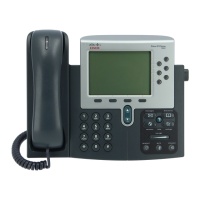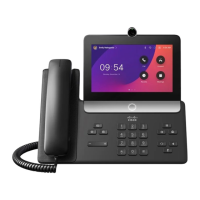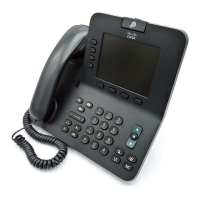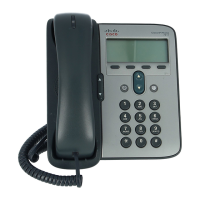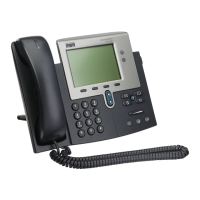3-31
Cisco SIP IP Phone Administrator Guide
Chapter 3 Managing Cisco SIP IP Phones
Using the Command-Line Interface
debug command keywords (continued) • error: Shows general error debug output.
• sip-task: Shows debug output for the SIP task.
• sip-state: Shows debug output for the SIP state machine.
• sip-messages: Shows debug output for SIP messaging.
• sip-reg-state: Shows debug output for the SIP
registration state machine.
• dns: Shows the DNS command-line interface (CLI)
configuration; allows you to clear the cache and set
servers).
• config: Shows output for the config system command.
• sntp: Shows debug output for Simple Network Time
Protocol (SNTP).
• sntp-packet: Displays full SNTP packet data.
• arp-broadcast: Shows ARP broadcast messages.
• http: Shows HTTP requests and responses.
• xml-events: Shows XML events that are posted to the
XML application chain.
• xml-deck: Shows XML requests for XML cards and
decks.
• xml-vars: Shows XML content variables.
• xml-post:Shows XML post strings.
Note Do not use the debug all command, because it can
cause the phone to become inoperable. This
command is for use only by Cisco TAC personnel.
SIP Phone> dns
Manipulates the DNS system. The following arguments are
used:
• -p: Prints out the DNS cache table.
• -c: Clears out the DNS cache table.
• -s ipaddress: Sets the primary DNS server.
• -b ip address: Sets the first backup server.
SIP Phone> erase protflash
Erases the protocol area of Flash memory. Forces the phone
to reset its IP stack and request its configuration files again.
This command can only be used if the telnet_level parameter
is set to allow privileged commands to be executed.
SIP Phone> exit
Exits the Telnet or console session.
Table 3-7 CLI Commands (continued)
Command Purpose
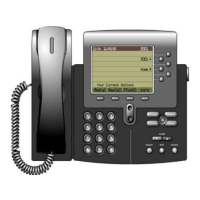
